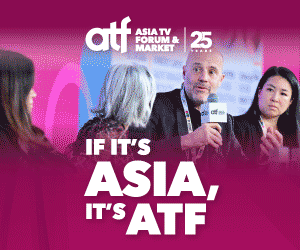
A month after Zee5 turned one in February this year, the Indian streaming platform’s monthly active users topped 61.5 million, with an average daily viewing time of 31 minutes, and the streaming app had a steady place in India's top five free entertainment apps on the Google Play store rankings.
By the end of March 2019, the platform had also become the biggest producer of digital original content in India, according to parent company Zee Entertainment Enterprises Ltd (ZEEL), which said this week that Zee5 had produced more than 60 shows and original movies across six languages in the financial year to 31 March 2019. That’s in addition to experimenting with new genres and continuing its commitment to language options that service all of India, and, increasingly, international markets.
Earlier this month, Zee5 premiered its first sci-fi thriller, Skyfire, across 190 countries, another first in a rapid-fire roll-out of the global streamer’s ambitious multi-genre originals slate of 72 originals for 2019.
In the works are sports-based drama Bombers, and Kaafir, starring Dia Mirza as a Pakistani mother who enters India under strange circumstances. Kaafir debuts on 15 June.
The new shows come a little more than a month after the streamer unveiled its first five non-Indian languages. Zee5 now has a total of 17 language options, part of its determination to open the service not only to all India, but to global audiences as well.
The language options – including native and dubbed content – are an integral part of Zee5, the USP built into the streamer’s original launch proposition.
In an environment where the major streamers had clear brand and content propositions, “we needed to create a reason why people would come to Zee5,” says Archana Anand, Zee5 Global’s chief business officer.
As she did her early research, Anand says it became obvious that “the real India – 95% of the population – was consuming content in Hindi and regional languages. The population consuming English content online is minuscule. I...
A month after Zee5 turned one in February this year, the Indian streaming platform’s monthly active users topped 61.5 million, with an average daily viewing time of 31 minutes, and the streaming app had a steady place in India's top five free entertainment apps on the Google Play store rankings.
By the end of March 2019, the platform had also become the biggest producer of digital original content in India, according to parent company Zee Entertainment Enterprises Ltd (ZEEL), which said this week that Zee5 had produced more than 60 shows and original movies across six languages in the financial year to 31 March 2019. That’s in addition to experimenting with new genres and continuing its commitment to language options that service all of India, and, increasingly, international markets.
Earlier this month, Zee5 premiered its first sci-fi thriller, Skyfire, across 190 countries, another first in a rapid-fire roll-out of the global streamer’s ambitious multi-genre originals slate of 72 originals for 2019.
In the works are sports-based drama Bombers, and Kaafir, starring Dia Mirza as a Pakistani mother who enters India under strange circumstances. Kaafir debuts on 15 June.
The new shows come a little more than a month after the streamer unveiled its first five non-Indian languages. Zee5 now has a total of 17 language options, part of its determination to open the service not only to all India, but to global audiences as well.
The language options – including native and dubbed content – are an integral part of Zee5, the USP built into the streamer’s original launch proposition.
In an environment where the major streamers had clear brand and content propositions, “we needed to create a reason why people would come to Zee5,” says Archana Anand, Zee5 Global’s chief business officer.
As she did her early research, Anand says it became obvious that “the real India – 95% of the population – was consuming content in Hindi and regional languages. The population consuming English content online is minuscule. If we were going to create an OTT platform for the real India, we needed to go deep across languages... we were the first to take languages this seriously.”
Zee5 was also a pioneer in voice search, born of Zee’s experience with audience literacy in India. “To ask people to type out what they want is far easier said than done,” she says. Voice search, she adds, added a “humongous edge”.
At the same time as creating something new, Anand says the one-year-old platform has deep roots in Zee’s heritage as a storyteller and a content creator. Everything Zee produces for its broadcast platforms streams on Zee5, layered with digital originals that are much more more edgy and target a younger audience.
Zee’s current streaming clarity was hard won, beginning in 2012 with the launch of streaming platform DittoTV at a time when everything from infrastructure and data costs to devices, payment options and mindsets posed serious challenges, and culminating in the roll out of the all-new Zee5 in February 2018 into a vastly changed and crowded environment.
“Nothing in the environment [in the early days] was conducive to supporting a win for digital,” Anand says, adding: “It was a really uncooked cake at that point”.
For her (and for Zee these days), digital is “not about another vertical. In every sense, I believe digital is a horizontal. It grows across all businesses... everybody waking up to the reality that this little device in consumers hands is going to be their go-to space for almost everything that they need and definitely for content,” she says.
Zee’s “second awakening” rolled out against that backdrop. Anand says the vision is “a global destination for the great stories that we are creating and telling every day, with a launch first in India and then across the globe”.
Ultimately, adding Zee5 to Zee’s stable seems now to be something of a no-brainer in a world increasingly connected and embracing streaming services.
“We primarily want to deliver the great content we’re creating and the great stories we are telling to an end audience... It then becomes not a option of whether you want to get into digital or not but the most logical next step because my consumer’s eyeball has moved, and if I am not going to move to capture the new destination then I’ve lost the plot.”
A version of this interview was published in ContentAsia's eNewsletter on 27 May 2019



















